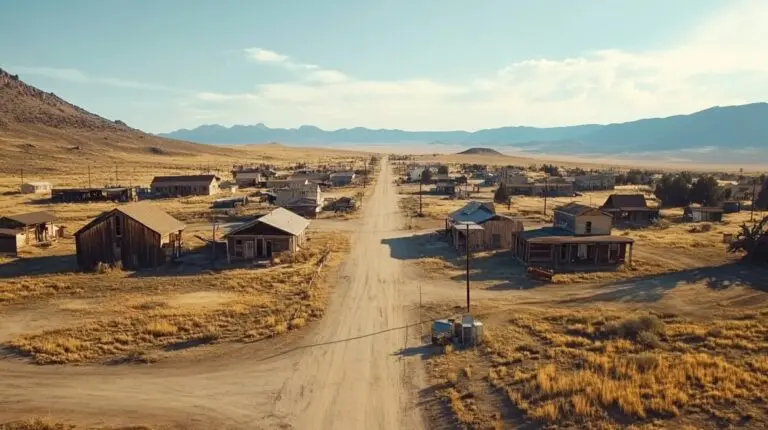Ah, Nevada, home of glittering casinos, endless deserts, and a population spread thinner than butter on stale toast. If you’ve ever found yourself wondering just how many people decided to call a place like Esmeralda County home (spoiler: it’s not many), you’re in the right spot.
Grab a coffee, or something stronger, and let’s dig into this thrilling tale of numbers, rankings, and why some counties probably wish they could borrow a few extra residents.
Let’s start with the obvious: Clark County is hogging all the residents in Nevada, with a whopping 2,350,611 people crammed in, most likely orbiting around Las Vegas.
Next, we have Washoe County with 499,064 souls, which feels almost modest by comparison, guess Reno’s charm only goes so far.
Lyon County chips in with 63,538 people, Carson City has a cozy 58,007, and Elko County rounds out the list with 54,607, which is basically a mid-sized concert crowd.
And there you have it, the big players in Nevada’s population game. Everyone else? Well, let’s just say they didn’t make the cut for the most happening counties.
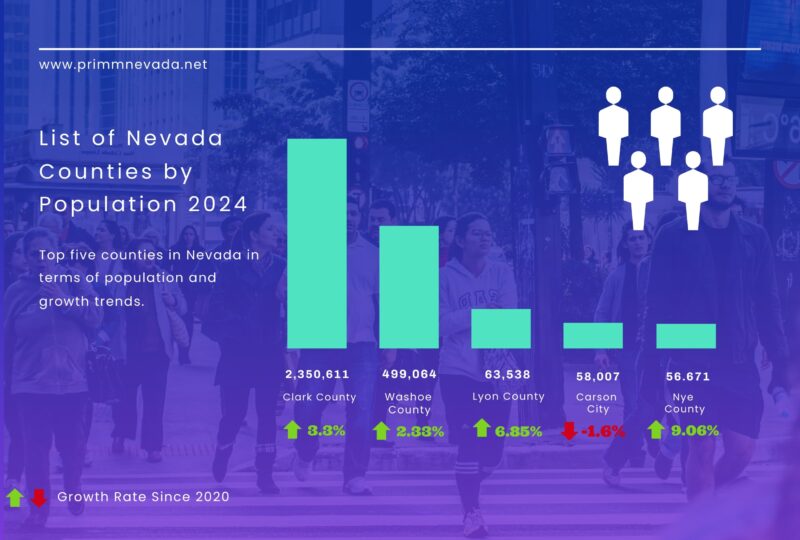
The Population of All Counties In Nevada 2025
So, here we have some super enlightening numbers that totally unlock the mysteries of population sizes and growth trends, because who doesn’t love a good stats party, right? It’s like a backstage pass to Nevada’s demographic drama, showing how folks are either flocking to or fleeing certain counties.
And before you ask, yes, these golden nuggets of info were plucked straight from the World Population Review, the ultimate authority on keeping us informed about who lives where. You’re welcome.
| County | 2025 Population | Growth Rate Since 2020 |
|---|---|---|
| Clark County | 2,350,611 | +3.33% |
| Washoe County | 499,064 | +2.33% |
| Lyon County | 63,538 | +6.85% |
| Carson City | 58,007 | -1.16% |
| Nye County | 56,671 | +9.06% |
| Elko County | 54,607 | +1.76% |
| Douglas County | 49,428 | -0.2% |
| Churchill County | 25,808 | +0.92% |
| Humboldt County | 16,976 | -1.71% |
| White Pine County | 8,298 | -8.4% |
| Pershing County | 6,278 | -5.12% |
| Lander County | 5,777 | +0.86% |
| Mineral County | 4,519 | -0.77% |
| Lincoln County | 4,464 | +0.43% |
| Storey County | 4,189 | +1.97% |
| Eureka County | 1,971 | +6.43% |
| Esmeralda County | 725 | -1.23% |
Clark County
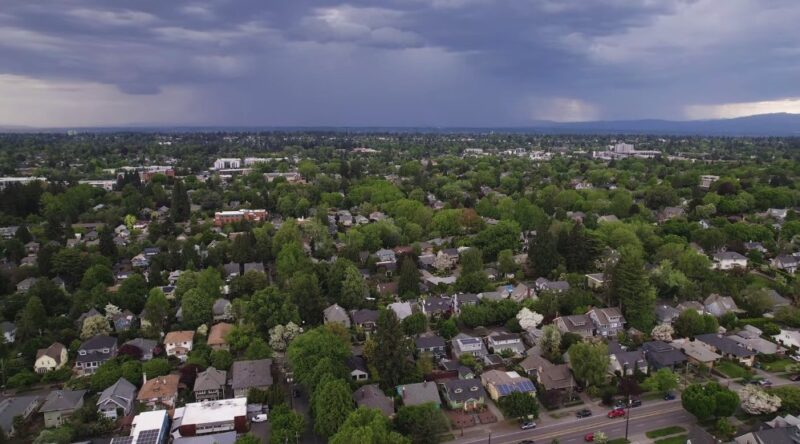
Clark County: the land of slot machines, showgirls, and a population mix that would make a college admissions committee jealous. Apparently, about 49.87% of the folks here are White, while Hispanic residents account for 28.1%, Black residents for 12.01%, and Asians for 10.17%. Laughlin, though, didn’t quite get the memo about diversity, it’s rocking a solid 90% White population. Guess they like to keep things consistent in their riverside retreat.
On the education front, 27.82% of adults have proudly earned their high school diplomas, while 17.4% went all the way and snagged bachelor’s degrees. You’ve got to admire the range—it takes all kinds to keep Vegas lit up, right? Whether you’re a blackjack dealer with a GED or a corporate exec with a graduate degree, everyone’s doing their part to fuel the local economy (and probably the casinos).
Speaking of paychecks, the earnings here are a real choose-your-own-adventure based on education. If you stopped at “see spot run,” you’re looking at about $33,361 annually. But if you’ve got a fancy graduate degree, congrats—you can rake in $75,913. Those degrees don’t just buy books; they buy bigger piles of chips at the tables.
Language-wise, Clark County is a linguistic melting pot. A solid 66.3% stick to good old English at home, while 22.75% prefer Spanish. The rest? Let’s just say they’re adding some flair to the mix. Multiculturalism, baby!
Now for the not-so-fun stats: poverty. A tough 20.8% of the Black population lives below the poverty line, the highest rate among all groups. Meanwhile, the White community clocks in at the lowest poverty rate with 9.75%
Washoe County
Oh, Washoe County, where the population breakdown reads like a census enthusiast’s dream. A whopping 67.95% of the folks here are White—no surprises there. Bringing some much-needed variety, we’ve got 11.44% of people identifying with two or more races, and another 10.71% filed under the mysterious “other races” category. Truly groundbreaking stats, right?
When it comes to education, Washoe doesn’t disappoint—or maybe it does, depending on your expectations. About 19.7% of adults managed to snag a bachelor’s degree, while a slightly more ambitious 12.78% powered through to grab graduate degrees. Riveting stuff.
Now, here’s the kicker: White residents lead the high school graduation game with a stellar 95.24% rate. Shocking, I know—it’s almost like completing high school is the bare minimum these days. Meanwhile, Asian residents are out here flexing with 45.39% holding bachelor’s degrees, proving that Washoe County does have its overachievers. Bravo, everyone.
Lyon County
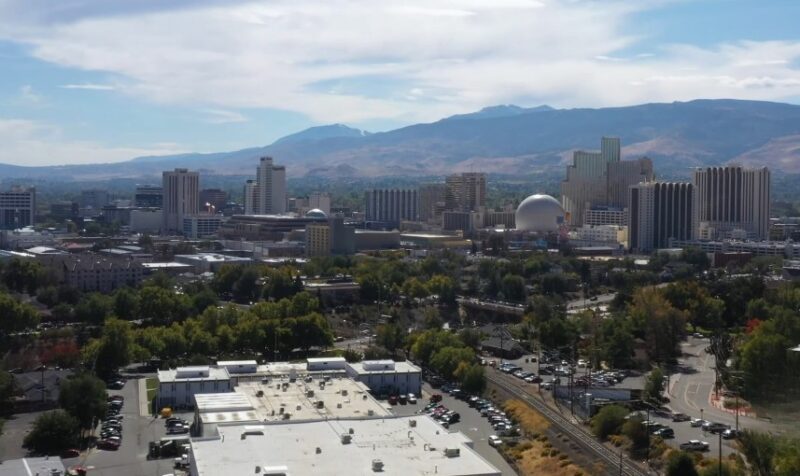
Oh, Lyon County, where the golden years are extra golden. With 12,604 seniors calling it home, the mature crowd clearly has a stronghold here. This means local healthcare, housing, and social services are probably working overtime to keep everyone’s bingo nights running smoothly and the retirement dreams alive.
Who needs youth when you’ve got experience, right?
Now, let’s talk about homeownership because Lyon County residents seem to have that on lockdown at an impressive 76.4%. Married couples are particularly crushing it, with a staggering 83.4% homeownership rate. Honestly, who wouldn’t want to settle down here? It’s practically the white picket fence capital of Nevada.
And then there’s the economy, where your degree is practically your ticket to survival. Check out these thrilling stats:
- Bachelor’s degree earners: Pulling in an average of $52,580 annually, these folks are living the dream—or at least paying for HBO Max without a second thought.
- Less than 9th-grade education: Bringing in $34,344 a year, which probably means skipping the avocado toast but still affording the basics (like instant ramen and Wi-Fi).
The takeaway? Get a degree, or Lyon County might just remind you why you should’ve stayed in school. Economic well-being apparently doesn’t come with a participation trophy here.
Carson City
Welcome to Carson City, where 74.57% of the population identifies as White, with a splash of two-or-more-race flair at 10.46%, and other races rounding things out at 8.09%. Because nothing says “cultural melting pot” like a 74% majority.
And sure, this “diversity” trickles into community programs, just enough to make them sound inclusive on paper.
The median age here is a solid 42.1 years, with women edging out men in the aging department (43.3 years vs. 41.5 years). Ladies, congratulations—you’ve got more experience. These numbers, naturally, are a dream come true for anyone selling retirement plans or running a geriatric yoga class.
And then there’s the economy, where disparities between racial groups are as clear as the desert sky:
- Asian residents: Crushing it in education and income—basically the overachievers of Carson City.
- Other groups: Let’s just say the numbers probably aren’t going on anyone’s LinkedIn profile.
Language-wise, 78.15% of folks here speak English and nothing else. But a notable 21.85% spice things up with other languages, primarily Spanish (17.79%). Translation? The city gets to pretend it’s cosmopolitan while scrambling to provide bilingual services in schools and government offices.
Nye County

Oh, Nye County, where educational achievements range from “I can totally count to 10” to “Look, Ma, I’ve got a degree!” Let’s break it down for you:
- High school grads rule the roost: A whopping 35.68% of residents over 25 have managed to snag that high school diploma, making it the most popular educational category. Go team GED!
- Bachelor’s degrees? Rare as rain here: Only 8.35% of folks went the extra mile for a bachelor’s degree. Apparently, the rest decided they had more important things to do, like mining or desert wandering.
Now, let’s talk about money—because we all know education and earnings go hand in hand, right?
- Graduate degrees pay off: Those brainy folks with graduate degrees rake in an average of $54,926. Not bad for hitting the books a little longer.
- No diploma, no dollars: If you didn’t finish ninth grade, you’re looking at $30,435 on average. Ouch. Let this be a lesson: studying might hurt, but your wallet will thank you later.
And then there’s the population breakdown. Spoiler: it’s not exactly a cultural melting pot.
- Mostly White (77.36%): The majority of residents are White, with smaller groups identifying as two or more races (9.85%) and other races (6.89%).
- Economic disparities: Unsurprisingly, these demographics see varying economic statuses, which probably makes things super fun when it comes to community planning and economic strategies.
So, Nye County, keep doing you—balancing high school diplomas, modest paychecks, and an endless supply of “What’s next?” moments.
Elko County
Ah, Elko County, where the population breakdown reads like someone threw a dart at a diversity chart. A whopping 71.07% of folks here are White, with 13.23% identifying as two or more races, apparently indecisiveness isn’t just for dinner plans.
Another 8.32% fall into the “other races” category, which is about as specific as asking a waiter what’s in the soup of the day. Meanwhile, Native Americans make up 5.04% of the population, reminding us that some people have actually been here longer than gold prospectors and cowboys.
At a median age of 34.9 years, Elko keeps things relatively youthful—probably because the mining industry isn’t exactly a retirement hobby. Gender-wise, it’s a near split with 52.37% male and 47.63% female, which means the dating pool might not be entirely hopeless if you’re into someone who smells faintly of dust and determination.
As for education, well, 33.81% of adults over 25 have at least a high school diploma—so there’s that. And if you’re one of the elite 10.5% with a bachelor’s degree, congrats! You’re likely pulling in an average $64,429 a year, which is leagues above the county’s median income.
Apparently, knowledge really is power—at least when it comes to paying off your student loans.
Douglas County
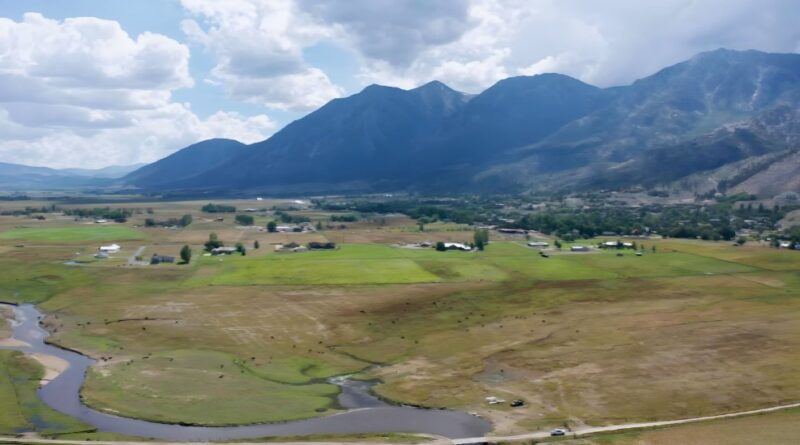
Douglas County, Nevada—population: 49,428 in 2025, and apparently, they’re not big fans of sticking around. With a growth rate of -0.24%, it seems more people are packing up than moving in. Congrats on being the seventh-largest county in the state, though! Not exactly a gold medal, but hey, participation trophies are still trophies.
Since 2010, the population has crawled up by 5.08%, inching its way from 47,037. A decade of hard work for what amounts to a mildly impressive shrug. The demographics? Predominantly white at 84.09%, with a sprinkling of diversity: 6.75% identify as two or more races, and 4.7% fall into the “other” category. It’s not exactly a melting pot, but there’s at least a little seasoning.
The median age here is a whopping 53.5 years. Translation: it’s basically a retirement community with a zip code. Nearly 30% of adults are seniors, which might explain the county’s top-tier homeownership rate of 76.7%. Gotta lock down those bingo-night venues, I suppose.
On the educational front, 20.42% of residents have a bachelor’s degree. And if you’re one of those lucky degree holders, your average earnings of $59,342 should keep you comfortably ahead of the “some college” crowd—and leagues above those who skipped high school altogether.
So, if you’re looking for a place with slow growth, senior vibes, and modest financial perks for the educated, Douglas County is calling your name—just don’t expect a booming social scene.
Churchill County
Ah, Churchill County, a place where the numbers tell a tale of balanced gender ratios, a mature population, and just a sprinkle of higher education. Let’s break it down, shall we?
A whopping 77.25% of folks here identify as White. Groundbreaking. Meanwhile, 8.78% spice things up by claiming two or more races, and 5.01% fall under the “Other race” category—because who needs specificity when “other” sounds so mysterious?
With a median age of 39.7, Churchill County residents are really leaning into their midlife crisis era. It’s a mature crowd, but don’t worry—there’s still a balanced mix of 51.6% males and 48.4% females to keep things interesting. Equality, but make it almost equal.
Let’s talk about the brains of the operation. A solid 33.76% of residents over 25 managed to snag a high school diploma—so, basically, one in three said, “Sure, I’ll finish this thing.” As for bachelor’s degree holders? Only 12.38%. What can we say? Churchill knows how to keep it low-key when it comes to academic ambition.
And here’s the cherry on top: if you’re one of the lucky ones with a bachelor’s degree, you’re pulling in an average income of $55,472. Not bad, right? Well, maybe don’t do the math on how much you spent getting that degree first.
Churchill County, where the stats are as charmingly understated as the population itself.
Humboldt County
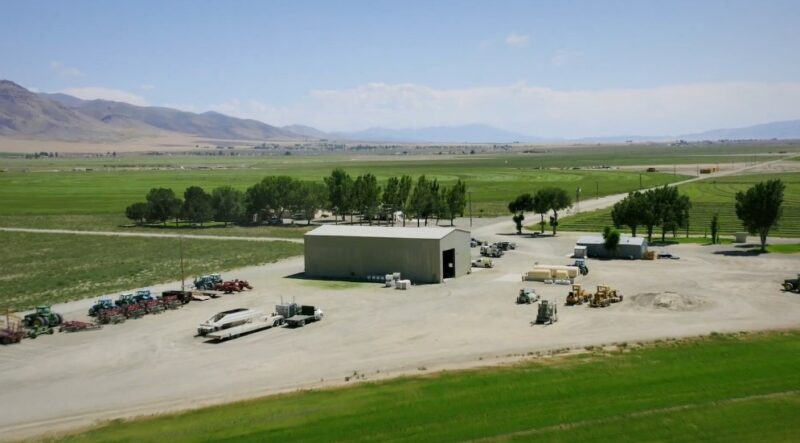
Humboldt County’s 2025 population is sitting at a thrilling 16,976—down 0.93% from last year. Looks like someone forgot to RSVP to the Humboldt party. That’s enough to keep it firmly in 9th place among Nevada’s counties, so no need to break out the champagne just yet.
As for the racial breakdown, here’s the scoop:
- 75.82% White: Shocker, right?
- 9.09% “Other” races: Because apparently, lumping people into a mysterious “other” category is still a thing.
- 8.82% Two or more races: Humboldt’s idea of diversity, folks.
- 3.87% Native American: Representing a slice of the pie that’s probably bigger than some counties’ whole population.
The median age here is 37, which feels about right for a place where “exciting nightlife” likely means bingo or Netflix buffering. Males are a youthful 36.9 years, while females edge them out at a wise 37.8. Ah, the complexities of aging.
When it comes to education, Humboldt’s overachievers boast stats like these:
- 34.11% are high school graduates: Because reading road signs is crucial.
- 15.44% hold bachelor’s degrees: A group valiantly tryihttps://www.humboldtcountynv.gov/ng to make Humboldt’s resume shine.
And there you have it, Humboldt County, where the numbers speak louder than the excitement level.
White Pine County
Ah, White Pine County, population 8,298 in 2025, down 2.63% from last year. Looks like a few folks finally packed up and followed their dreams, or maybe just got tired of hearing crickets as their closest neighbors. With this number, it proudly sits as the 10th largest county in Nevada, which is kind of like being the least soggy cracker in a soup.
The median age here is 41.4 years, which basically means White Pine County is the land of mid-life crises and second chances. Not exactly bursting with youthful energy, but hey, at least someone’s sticking around to keep the bingo halls alive.
When it comes to education, 42.38% of the over-25 crowd have at least made it through high school, and a solid 9.87% have gone the extra mile to grab that bachelor’s degree. Honestly, with numbers like these, the term “overachiever” takes on a whole new meaning.
Pershing County
Pershing County, home to a whopping 6,278 people in 2025, is really setting the standard for small-town living—except it’s 1.35% smaller than last year. It’s the 11th largest county in Nevada, which honestly says more about the size of Nevada’s other counties than anything else.
The racial breakdown here? Predominantly White at 74.09%—shocking, I know—with 8.64% identifying as two or more races and another 8.44% falling under the “other races” umbrella. Meanwhile, Black or African American residents make up 3.99%, proving that diversity in Pershing is…well, a work in progress.
The median age is 40.4 years, so we’re talking about a seasoned crowd—not too old, not too young, just the sweet spot for reminiscing about “the good old days” while reluctantly learning to use smartphones.
When it comes to education, 42.51% of residents over 25 have graduated high school (because, hey, who needs algebra when you’ve got life experience?), and a humble 5.8% hold a bachelor’s degree. These stats really paint a picture of a county that’s focused on simpler, salt-of-the-earth living—and maybe isn’t too concerned with climbing any ivory towers.
Lander County
Ah, Lander County—where a whopping 5,777 people in 2025 are living the dream, growing their population at a breakneck pace of 0.14% annually. That’s right, folks, they’re practically bursting at the seams with growth, landing them the prestigious spot as Nevada’s 12th largest county. Clearly, the competition was stiff.
Demographically, it’s a sea of sameness with 84.81% identifying as White. A bold 6.51% are mixing it up as two or more races, and 4.12% are Native American. Black or African American residents come in at 3.54%, proving that diversity here is more of a light sprinkle than a heavy pour.
The median age? A solid 40 years, though the men seem to be hanging onto their youth just a smidge longer at 39.5 years compared to the more refined 42.6 for women. A thrilling revelation, I know.
And let’s talk education. A solid 34.61% of those over 25 have achieved the monumental feat of graduating high school.
Mineral County
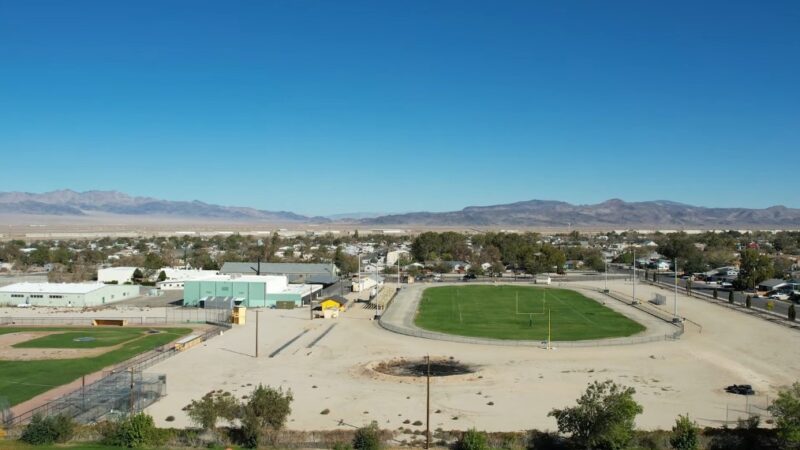
Ah, Mineral County in 2025—where a whopping 4,519 people roam its vast expanse. That’s a 0.2% population dip, which I’m sure has everyone frantically asking, “Who left?” Ranked as the 13th largest county in Nevada by population, it’s clearly a bustling hub… said no one ever.
Let’s talk density—or lack thereof. With just about one person per square mile over its 3,751 square miles, you’re more likely to bump into a tumbleweed than a neighbor. It’s rural, alright—so rural you might feel like you’re starring in a post-apocalyptic movie.
Homeownership is a big deal here, with 73.9% of people owning their homes. Spacious living? You bet. With an average household size of 2.38, it’s the dream for anyone who loves quiet nights and not being bothered by, well, anyone.
And let’s not skip the educational stats. Among adults over 25, 41.56% have wrapped up high school, while 12.69% took it further to earn a bachelor’s degree.
Lincoln County
Well, as of 2025, Lincoln County boasts a whopping population of 4,464—because apparently, everyone else decided they had better places to be. With an annual growth rate of 0.27%, we’re talking about the kind of “explosive growth” that could maybe fill one extra diner booth in a decade. And let’s not forget the stellar 16.58% population drop since 2010. Clearly, Lincoln County has mastered the art of “less is more.”
Demographically, it’s a riveting mix: 84.49% White, 3.64% Native American, and 4.53% African American, with other groups making up numbers so small they barely register. Diversity? Let’s just say Lincoln County isn’t exactly competing for the title.
Households here are cozy, averaging 2.43 people, and a solid 73.7% own their homes. Because if you’re sticking around Lincoln County, why not buy a house and settle in for the long haul? Renting would imply you’re considering an escape route.
When it comes to education, 43.36% of adults have a high school diploma as their crowning academic achievement.
Storey County
Storey County, with its thrillingly bustling 2024 population of 4,189, has managed to eke out a jaw-dropping growth rate of 0.29% over the past year. That’s right—watch out, Vegas, this county is on the rise!
Since the 2010 headcount of 3,997, Storey has skyrocketed by a whopping 4.8%, cementing its spot as the 15th largest county in Nevada. Big fish in a small pond, right?
- White: A dominating 83.83%—diversity, eat your heart out.
- Two or more races: 12.31%, because why settle for one?
- Black or African American: A blink-and-you’ll-miss-it 1.98%.
- Asian and other races: Making up the remaining “approximately 2%,” because precision is overrated.
Oh, and let’s not forget the median age—a sprightly 55.7 years. Clearly, this is the go-to destinahttps://www.storeycounty.org/tion for retirees who’ve had enough of the city’s hustle and bustle but still want to keep an eye on it from afar.
Homeownership here sits at a staggering 97%, because renting is apparently for suckers. Storey County residents are all about putting down roots—deep, immovable ones.
Over 90% of the population has graduated high school, and about 31% have earned a bachelor’s degree or higher. That’s practically Ivy League compared to some other places. It’s like the county’s slogan should be: “Small but surprisingly brainy.”
Eureka County

Eureka County’s population for 2024 is expected to hit a whopping 1,971. That’s right—almost enough people to fill a decent-sized high school gym. With a growth rate of 2.82% over last year, it’s clear the place is just bursting at the seams… relatively speaking.
Still, it’s holding strong as one of Nevada’s least crowded counties, ranking 16th. Talk about exclusivity.
As for demographics, the county is overwhelmingly White at 90.57%. Native Americans make up 5.3%, adding some much-needed variety, while Asians and Blacks barely move the needle at 0.55% and 0.06%, respectively. Let’s just say “diverse” isn’t exactly Eureka’s middle name.
On the home front, 76% of residents own their homes because, apparently, renting just isn’t their vibe. It’s all about settling down and staying put in this community. And with an average family size of 3.05, it’s safe to say that Eureka leans heavily toward the “white-picket-fence and kids playing in the yard” lifestyle. How quaint.
Esmeralda County
Esmeralda County: where the population has dwindled to a whopping 725 people—a dramatic 1.49% drop since last year, according to the latest U.S. census. Honestly, I’m shocked anyone noticed.
Once proudly boasting 783 residents back in 2010, this thriving 17th largest Nevada county has managed to shrink by 7.41%. At this rate, we’ll need a search party to find its last resident in a few decades.
The demographic breakdown is equally riveting. A staggering 89.9% of the population identifies as White, with a bold 6.63% claiming two or more races. Asians represent a groundbreaking 1.94%, while Native Americans come in at 1.33%. Truly, the melting pot vibes here are overwhelming.
Then there’s the median age—55 years. That’s right, folks, this is where the retirees of Nevada go when they want to enjoy a slower pace of life…or maybe just no pace at all.
And education? Oh, it’s diverse, alright. About 22.68% of adults have proudly capped their academic journey at high school, while 15.23% have gone on to snag a bachelor’s degree.
The Bottom Line
So, there you have it, the riveting rundown of Nevada’s counties by population in 2024. Some are booming hubs of activity, while others feel more like a post-apocalyptic movie set.
It’s fascinating to see how the numbers stack up, even if it mainly leaves you questioning why certain counties are still on the map.





